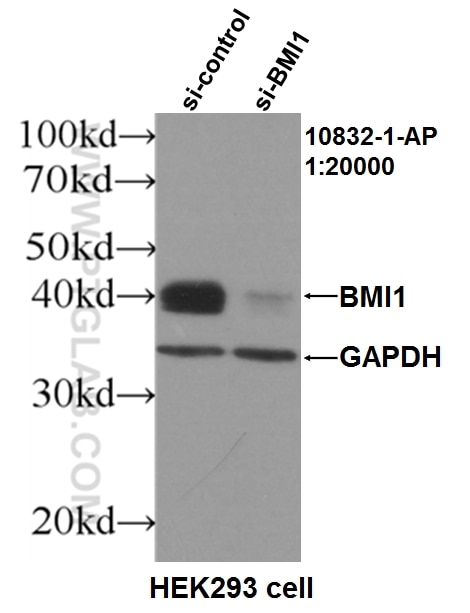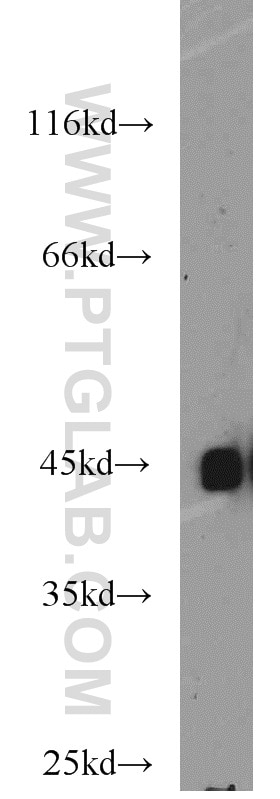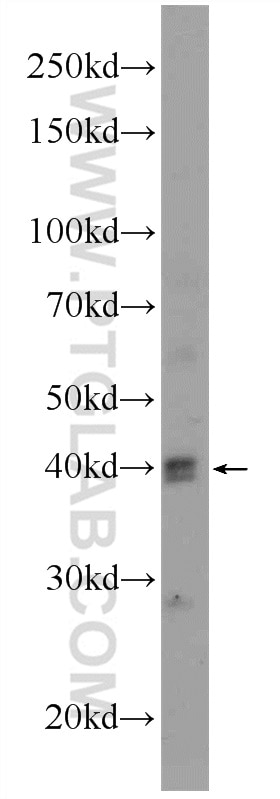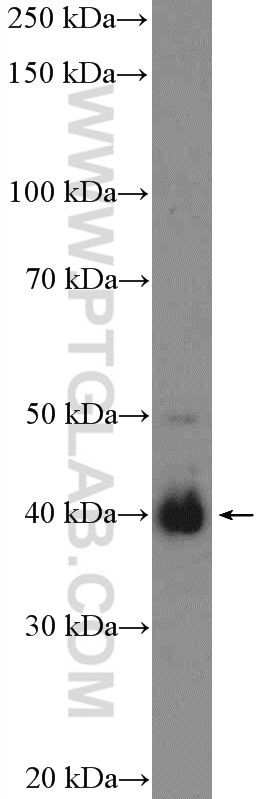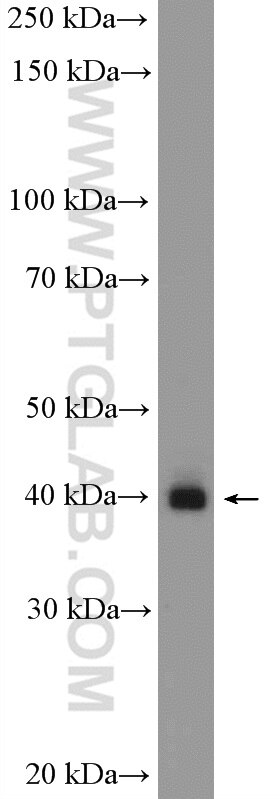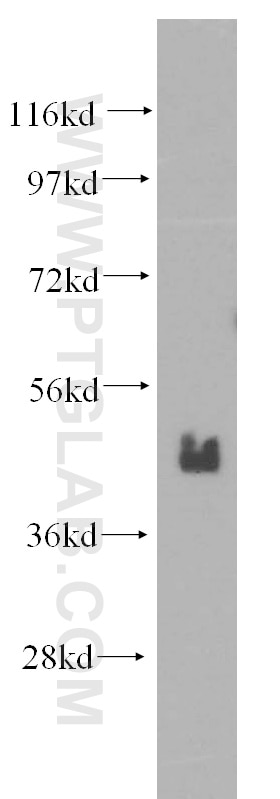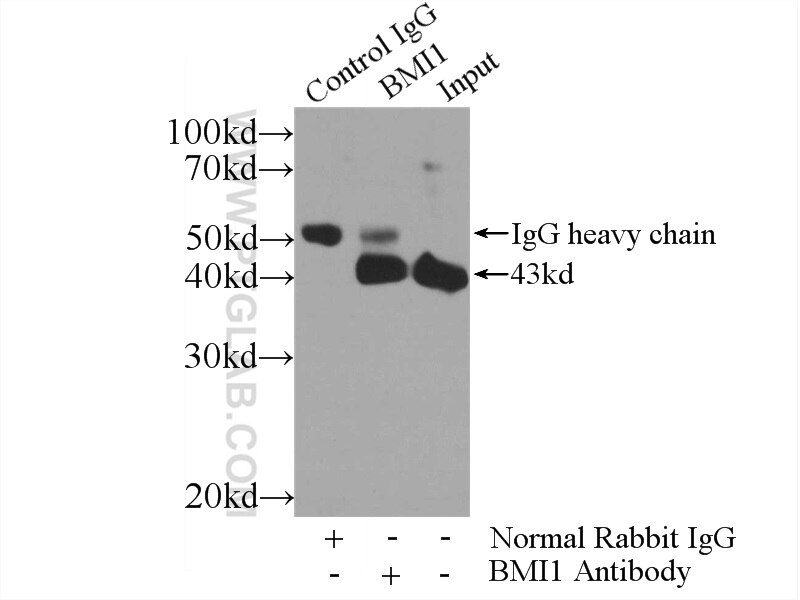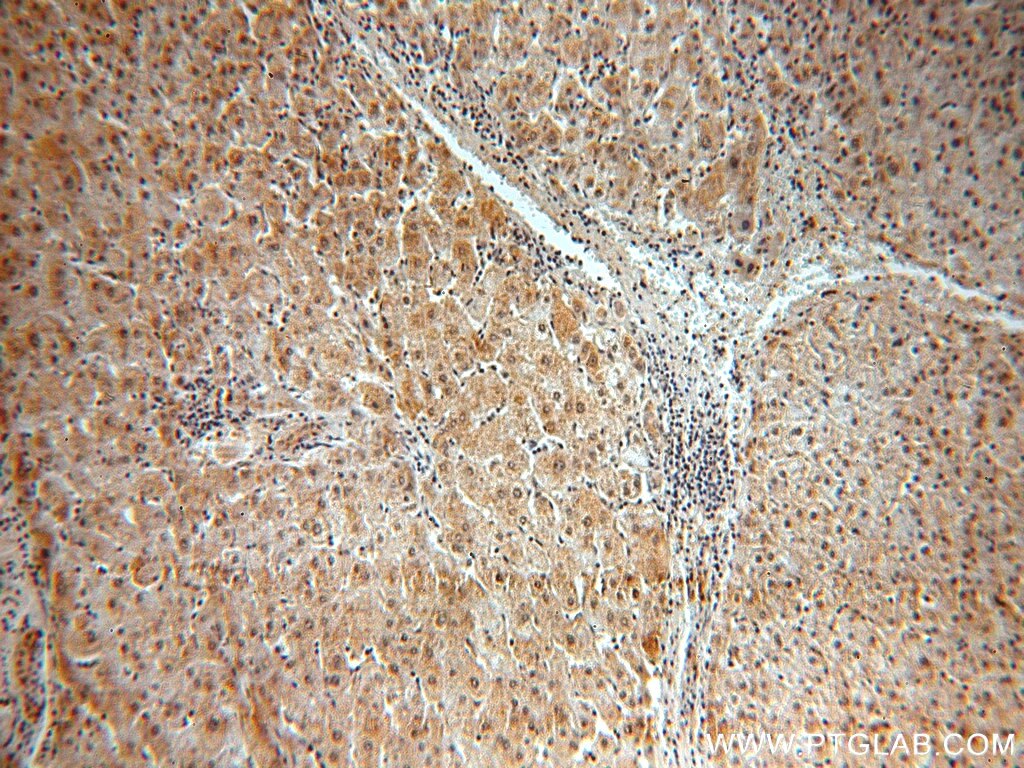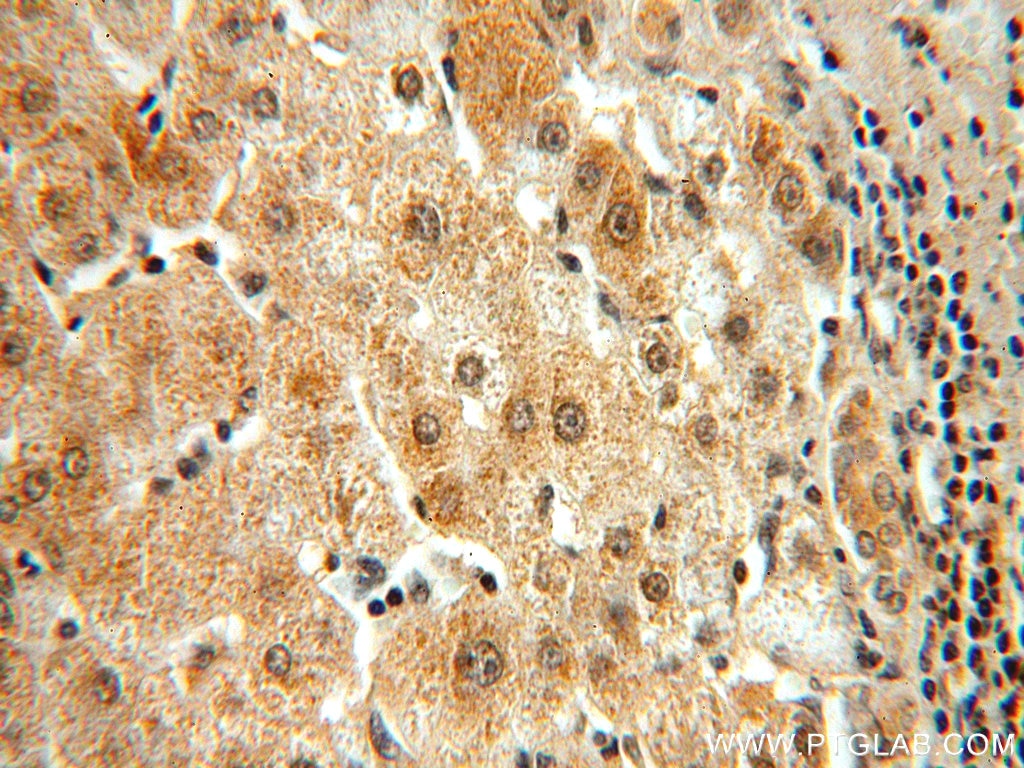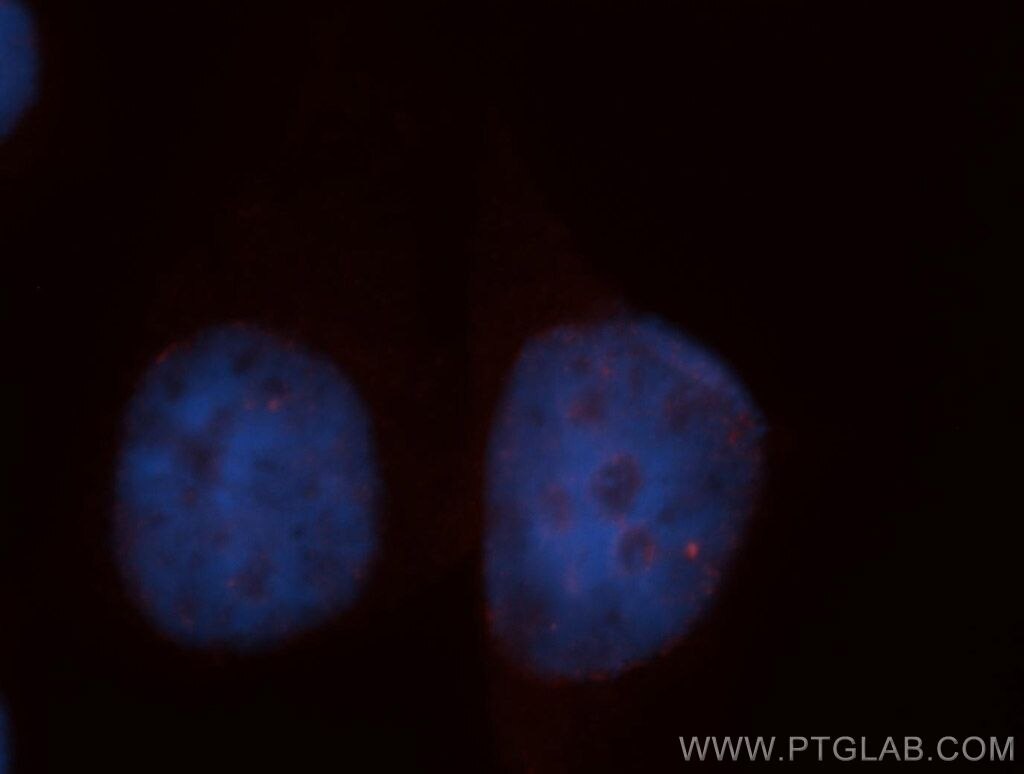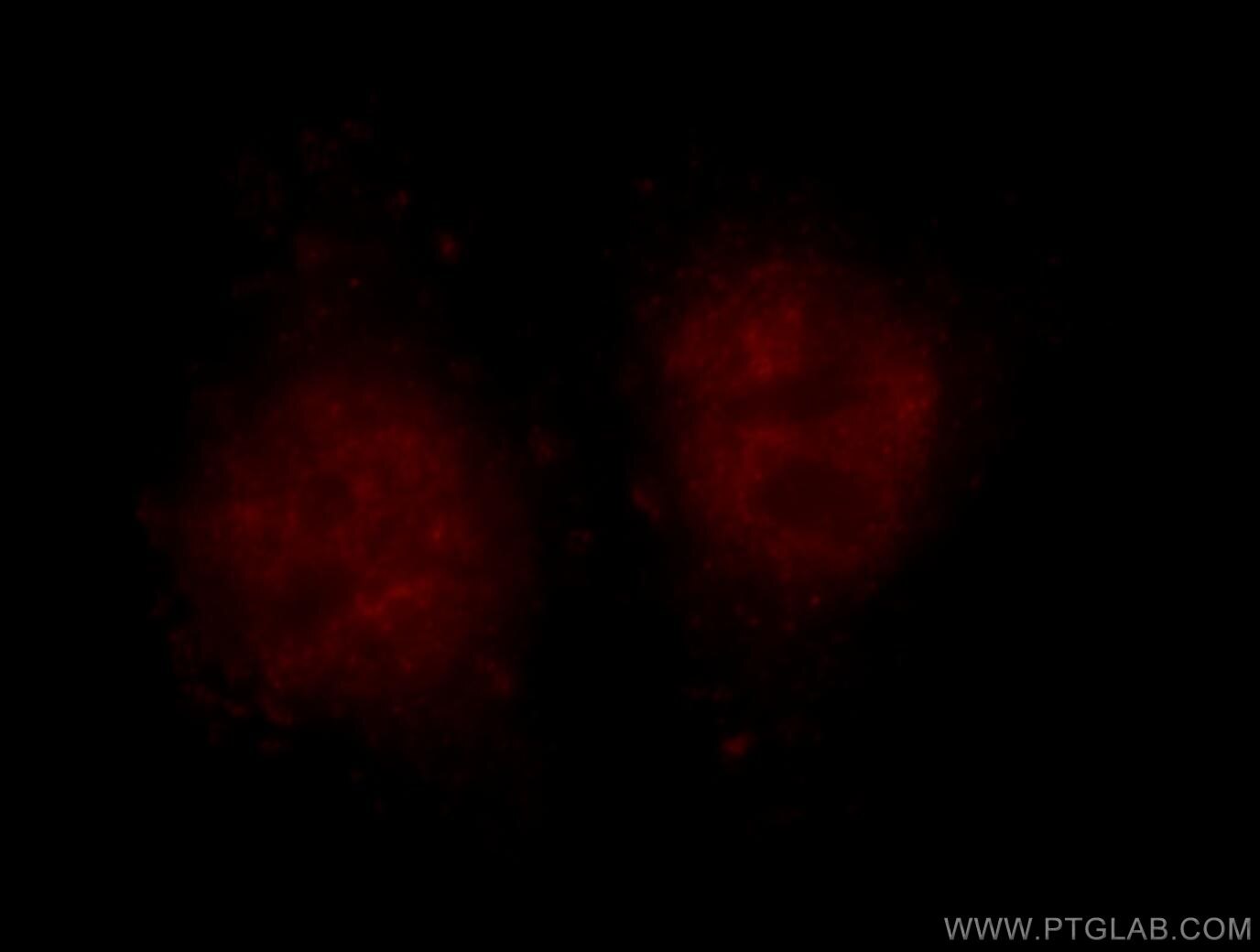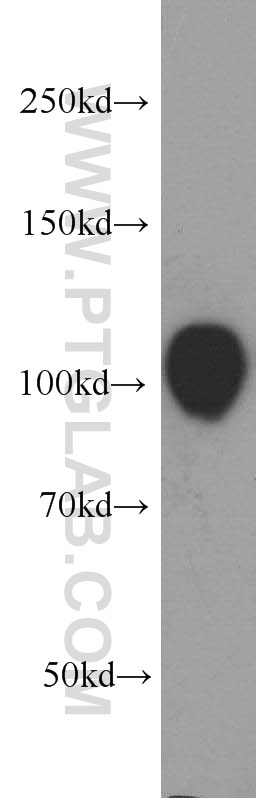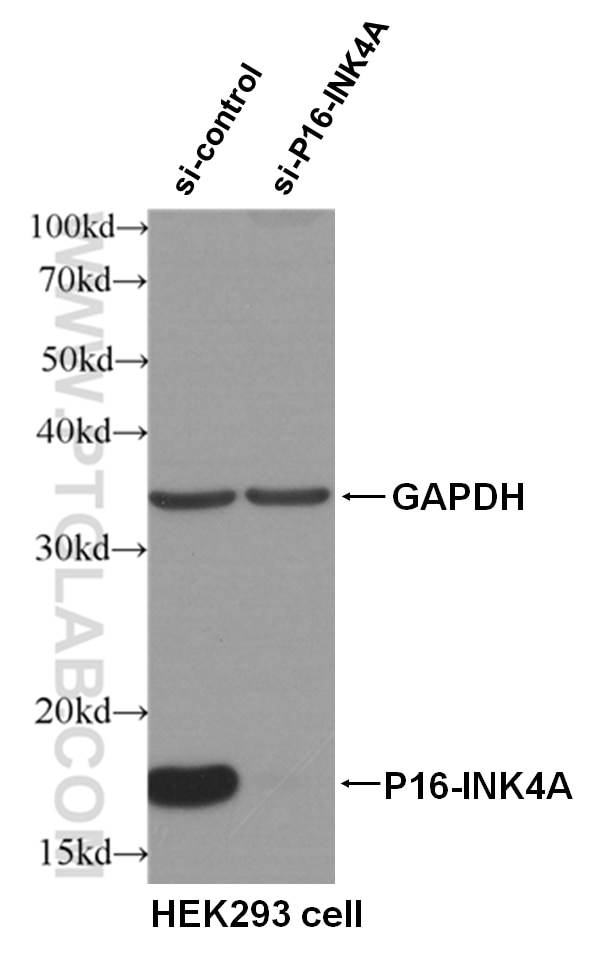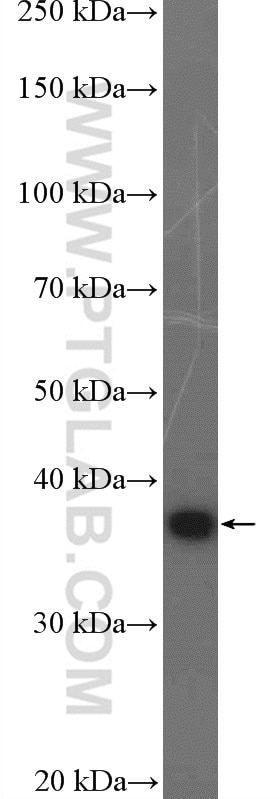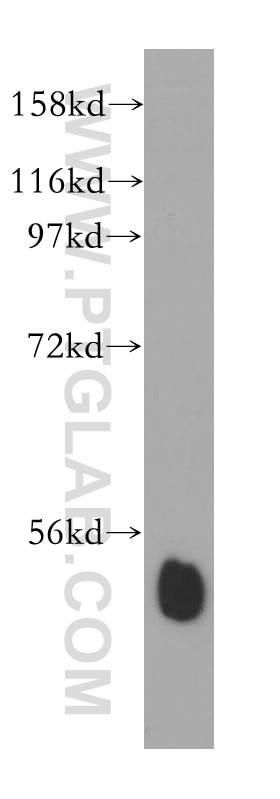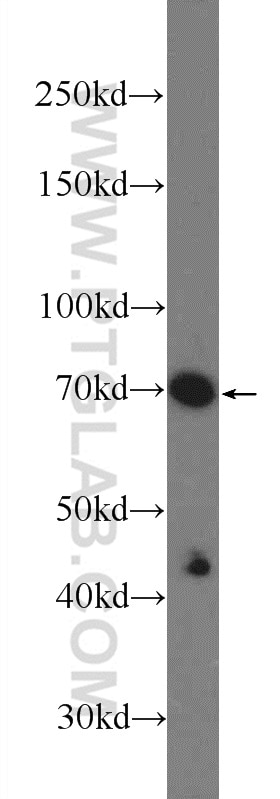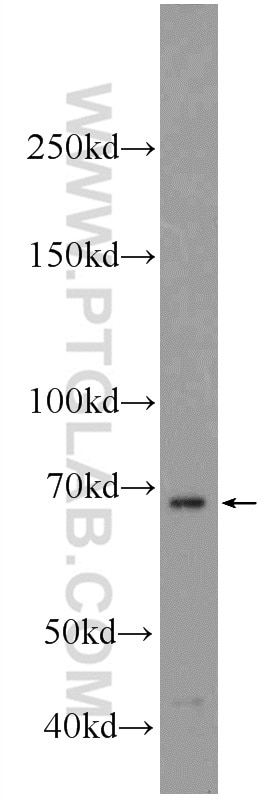- Featured Product
- KD/KO Validated
BMI1 Polyklonaler Antikörper
BMI1 Polyklonal Antikörper für WB, IHC, IF/ICC, IP, ELISA
Wirt / Isotyp
Kaninchen / IgG
Getestete Reaktivität
human, Maus
Anwendung
WB, IHC, IF/ICC, IP, CoIP, ChIP, ELISA
Konjugation
Unkonjugiert
Kat-Nr. : 10832-1-AP
Synonyme
Galerie der Validierungsdaten
Geprüfte Anwendungen
| Erfolgreiche Detektion in WB | U-937-Zellen, HEK-293-Zellen, K-562-Zellen, Maushirngewebe |
| Erfolgreiche IP | U-937-Zellen |
| Erfolgreiche Detektion in IHC | humanes Leberkarzinomgewebe Hinweis: Antigendemaskierung mit TE-Puffer pH 9,0 empfohlen. (*) Wahlweise kann die Antigendemaskierung auch mit Citratpuffer pH 6,0 erfolgen. |
| Erfolgreiche Detektion in IF/ICC | HepG2-Zellen |
Empfohlene Verdünnung
| Anwendung | Verdünnung |
|---|---|
| Western Blot (WB) | WB : 1:500-1:2000 |
| Immunpräzipitation (IP) | IP : 0.5-4.0 ug for 1.0-3.0 mg of total protein lysate |
| Immunhistochemie (IHC) | IHC : 1:20-1:200 |
| Immunfluoreszenz (IF)/ICC | IF/ICC : 1:20-1:200 |
| It is recommended that this reagent should be titrated in each testing system to obtain optimal results. | |
| Sample-dependent, check data in validation data gallery | |
Veröffentlichte Anwendungen
| KD/KO | See 4 publications below |
| WB | See 34 publications below |
| IHC | See 8 publications below |
| IF | See 3 publications below |
| CoIP | See 2 publications below |
| ChIP | See 2 publications below |
Produktinformation
10832-1-AP bindet in WB, IHC, IF/ICC, IP, CoIP, ChIP, ELISA BMI1 und zeigt Reaktivität mit human, Maus
| Getestete Reaktivität | human, Maus |
| In Publikationen genannte Reaktivität | human, Maus |
| Wirt / Isotyp | Kaninchen / IgG |
| Klonalität | Polyklonal |
| Typ | Antikörper |
| Immunogen | BMI1 fusion protein Ag1286 |
| Vollständiger Name | BMI1 polycomb ring finger oncogene |
| Berechnetes Molekulargewicht | 37 kDa |
| Beobachtetes Molekulargewicht | 37-43 kDa |
| GenBank-Zugangsnummer | BC011652 |
| Gene symbol | BMI1 |
| Gene ID (NCBI) | 648 |
| Konjugation | Unkonjugiert |
| Form | Liquid |
| Reinigungsmethode | Antigen-Affinitätsreinigung |
| Lagerungspuffer | PBS mit 0.02% Natriumazid und 50% Glycerin pH 7.3. |
| Lagerungsbedingungen | Bei -20°C lagern. Nach dem Versand ein Jahr lang stabil Aliquotieren ist bei -20oC Lagerung nicht notwendig. 20ul Größen enthalten 0,1% BSA. |
Hintergrundinformationen
BMI- 1 is one of polycomb group genes, which together with Ring1 strongly enhances the E3 ubiquitin ligase activity of the Ring2 catalytic subunit. Bmi1 plays an important role in the regulation of cell proliferation and senescence through repression of the p16Ink4a and p19Arf genes and is required for maintenance of adult hematopoietic and neural stem cells. The antibody 10832-1-AP detected proteins of 45-48kda, which may include phosphorylated isoforms of the protein.
Protokolle
| Produktspezifische Protokolle | |
|---|---|
| WB protocol for BMI1 antibody 10832-1-AP | Protokoll herunterladen |
| IHC protocol for BMI1 antibody 10832-1-AP | Protokoll herunterladen |
| IF protocol for BMI1 antibody 10832-1-AP | Protokoll herunterladen |
| IP protocol for BMI1 antibody 10832-1-AP | Protokoll herunterladen |
| Standard-Protokolle | |
|---|---|
| Klicken Sie hier, um unsere Standardprotokolle anzuzeigen |
Publikationen
| Species | Application | Title |
|---|---|---|
EMBO J A covalently bound inhibitor triggers EZH2 degradation through CHIP-mediated ubiquitination. | ||
Dev Cell ASK1-Mediated Phosphorylation Blocks HDAC6 Ubiquitination and Degradation to Drive the Disassembly of Photoreceptor Connecting Cilia.
| ||
Oncogene Autophagy regulates the cancer stem cell phenotype of head and neck squamous cell carcinoma through the noncanonical FOXO3/SOX2 axis. | ||
J Neurosci Altered histone monoubiquitylation mediated by mutant huntingtin induces transcriptional dysregulation. | ||
Int J Cancer SOX8 regulates cancer stem-like properties and cisplatin-induced EMT in tongue squamous cell carcinoma by acting on the Wnt/β-catenin pathway. | ||
Oncotarget Ascl2 activation by YAP1/KLF5 ensures the self-renewability of colon cancer progenitor cells. |
